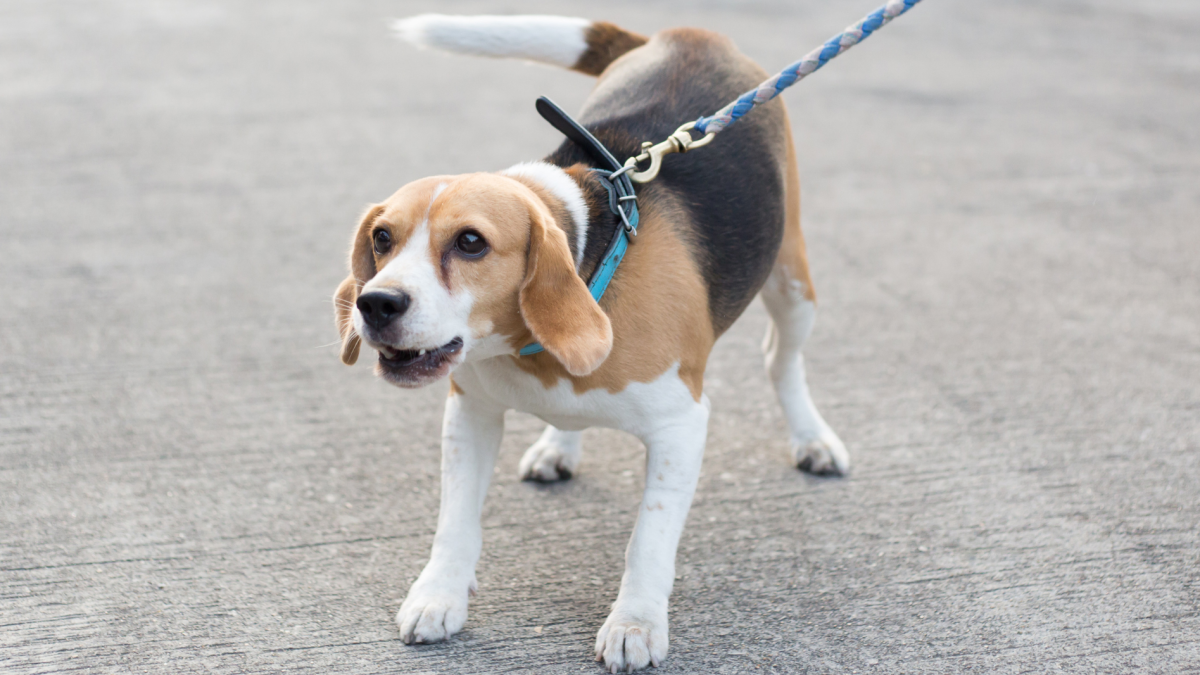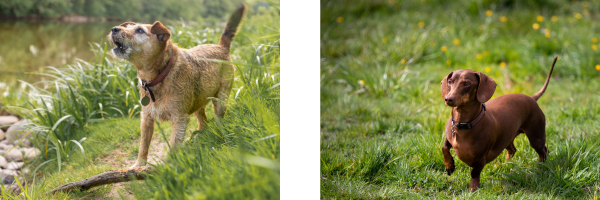Why Your Dog Growls, Snaps, or Seems Unpredictable

Sometimes dogs show behaviours that seem to make no sense. One moment they’re moving towards you, tail softly wagging and body loose, and the next they’re growling, snapping, or backing away. For many guardians, this change feels confusing or even worrying. You may wonder, why does my dog seem friendly one second and defensive the next?
In reality, what looks unpredictable often makes perfect sense once we understand what’s motivating it. These moments are known as conflict behaviours, and they are a natural expression of an internal emotional struggle.
,
What Conflict Behaviour Really Means
Conflict behaviour happens when a dog experiences two opposing motivations at the same time, most often, the motivation to approach and engage and the motivation to avoid or withdraw.
A dog might seek social contact because of curiosity, affection, or previous positive experience. But that same dog might also feel uncertain, fearful, or uncomfortable in the moment. When both motivations activate together, the result can be hesitation, ambivalence, or rapid switches between engagement and withdrawal.
.
Why Conflict Feels So Distressing
For the dog, being caught between two motivations is stressful. The nervous system is trying to prepare the body for two opposing actions, move forward or move away, and both pathways can activate at once. Heart rate increases, muscles tense, breathing quickens, and the dog may struggle to make sense of what to do next.
If these moments happen repeatedly, the ongoing uncertainty can build emotional stress and make it harder for the dog to feel safe and relaxed. Over time, that pressure can make behaviour less predictable and increase the risk of defensive reactions. Repeated exposure to conflicting emotional states contributes to chronic stress, which in turn impacts learning, emotional regulation, and overall welfare.
.
Recognising Conflict in Your Dog
Conflict can look subtle. Guardians often notice:
- Hesitation or freezing before approaching a person or object
- Lip-licking, yawning, or turning the head away mid-interaction
- Quick changes in body tension, soft to stiff, then soft again
- Whining, shifting weight, or paw lifting when unsure
- Alternating between proximity and distance
These are early indicators that your dog is trying to engage but doesn’t yet feel safe enough.
.

.
Why It’s Not Unpredictable
To an outside observer, conflict behaviours may appear sudden. But once you know what to look for, the pattern becomes clear. The dog’s internal state is shifting as the environment changes, perhaps the visitor leans forward or a sound startles them.
From a behavioural perspective, these are predictable outcomes of approach–avoidance conflict. The dog’s body and brain are communicating uncertainty long before any overt reaction.
When we label these moments as “unpredictable” or “out of nowhere,” we miss the subtle communication that preceded them. Recognising those signals gives us the chance to adjust and prevent escalation.
.
The Role of Learning and Experience
A dog’s learning history shapes how conflict unfolds. A dog who has been punished for growling, for example, may suppress early warning signs but still experience the same internal tension. Without a safe outlet, the dog’s response may escalate more suddenly.
Positive learning experiences, on the other hand, help dogs navigate conflict safely. When a dog learns that moving away, pausing, or looking to their guardian leads to calm support and reinforcement, approach–avoidance moments become less charged.
Pain and physical discomfort can also create or intensify conflict. A dog with joint pain might want to greet another dog but hesitate because movement hurts. Veterinary input is essential when conflict behaviours appear unexpectedly or worsen over time.
.
Reducing Conflict: How Guardians Can Help
The aim of behaviour support is not to force engagement but to reduce the conditions that create conflict in the first place.
Here are a few practical ways to help your dog feel more secure:
- Offer more space and choice.
- Invite your dog to decide when and how to approach.
- Avoid social pressure.
- Don’t lean over, reach out, or coax a hesitant dog.
- Support predictability.
- Keep greetings calm and consistent.
- Predictable patterns reduce uncertainty and help the dog anticipate positive outcomes.
- Prioritise safety and emotional support.
- Seek professional help if needed.
If your dog’s conflict behaviours involve growling, snapping, or biting, please reach out for support. Together, we can help your dog feel safer and put kind, effective strategies in place.
,
Why Empathy Matters
When we interpret conflict behaviours with empathy rather than frustration, everything changes. Instead of asking, “Why is my dog behaving like this?” we can ask, “What emotion or motivation might be pulling them in two directions?”
That shift opens space for understanding, compassion, and better decision-making. It also prevents suppression of communication, allowing the dog to express their needs safely.
.
What This Means Going Forward
Conflict behaviours are not signs of defiance or being stubborn, they are signs of uncertainty. By recognising them early and responding supportively, we can reduce stress, lower risk, and strengthen trust. Safety, after all, is both an external and internal experience. When a dog no longer feels torn between approach and avoidance, they can begin to explore the world with genuine curiosity and confidence.
 Sonia Catherall
Sonia Catherall 